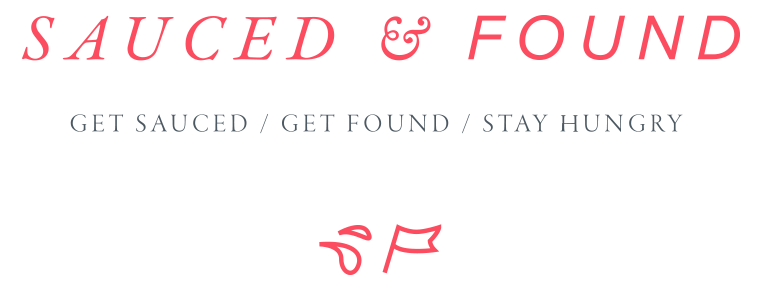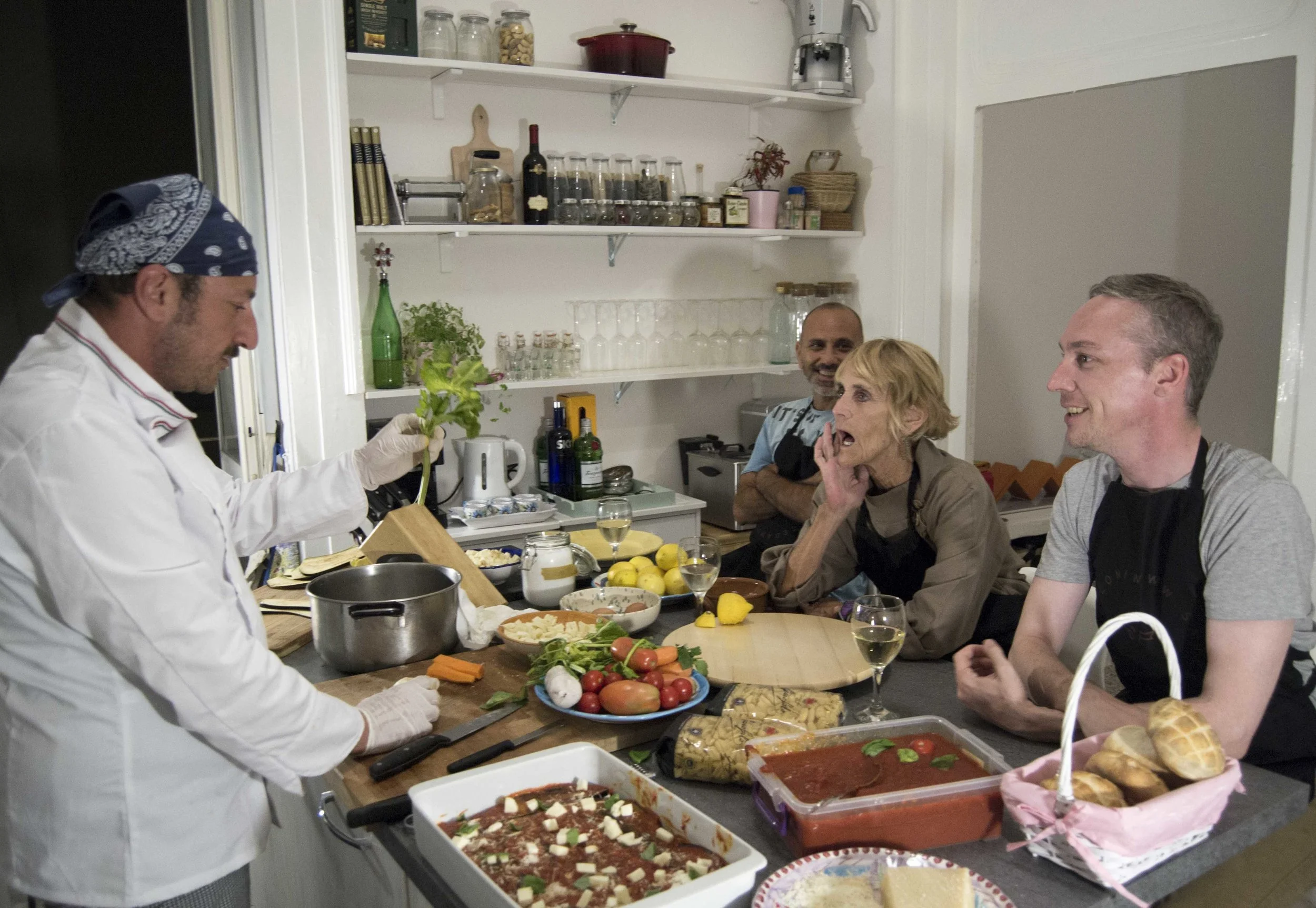In Defense of ITALIAN Food: Ten Commandments
Gambero Rosso / Italian Feast
““Everything you see I owe to pasta.”
”
When I lived in America, I always secretly harbored this idea that dried pasta was intrinsically inferior to fresh pasta. Maybe it was the Calvinist in me that maintained anything that requires more work is naturally better. I also perhaps romantically believed that all Italians made all things by hand- and by extension that all Italian food was the same. In the 1990s, regional Italian food was largely non-existent in the United States. Even New York, bastion of Italian-American cookery was largely void of regional Italian cuisine. Fine dining chefs served exotic dishes like vitello tonnato (which I have never really cottoned to) on the same menus that offered ribollita. The former is from the Piedmont and has some suspicious origins in French Savoy; the latter is a fine example of Tuscan Cucina Povera. Call me a zealot, but those two dishes should never be on the same menu together. It is offensively blasphemous. Unless maybe you are Massimo Bottura and are doing something whimsically ironic.
Another more ubiquitous trend is the hodgepodge lodge Italian-American style cooking that is largely Neapolitan but then drenched in a lot of bad cheese and sort of haphazardly arranged to please American palates. Restaurants serving this sort of food are the places that put chicken in everything and have a lot of weird salad combinations they ostensibly call Italian but that I have never actually seen on the boot that is Italy. This is the sort of Italian food I knew as a child. Just as Mexican food in America tends to white wash all the subtlely and regionality of its original forbearers, so too does this Italian food in America run roughshod over about 4,000 years of peninsular culinary history. Also, both bad renditions of the originals seem to involve entirely too much industrial cheese!
My parents for example frequently dine at an Italian restaurant near their town called Capone’s. I don’t mean to pick on them or the restaurant—there are thousands of Italian restaurants like this one across all of America. But here I go—I am going to pick on this place. Because this restaurant in particular makes me mad!
First, let’s not even get started on how offensive that name is. The ristorante logo featuring a silhouetted man unmistakably sporting a borsellino cap makes it clear that this is an unapologetic homage to America’s most famous mobster. Capone’s parents were from Angri in the Province of Salerno. He in fact was born on American soil and joined the Sicilian mafia and not the Camorra of his parents native Campania. These are just details. And I get it--- we all love to love that tax-evading rapscallion Al Capone—but do all American Italian restaurants have to make these tired, ridiculous references to organized crime? Enough already! Why aren’t there more restaurants called Beccaria’s or Acquino’s or Virgilio’s!
And that is not to mention the silly food on this Capone’s menu. Here is a fun one-- Scampi di Parma which features prawns wrapped in prosciutto and served with cream sauce. This treacly abomination is not fucking Italian food!!! Cream with seafood – ahhhhh! Just enough. Let the French do it but can we just keep our Mediterranean seafood sacrosanct and stop splashing it with lactose. Why does every Italian restaurant in suburban America have menus that look like Guy Fieri went running through their kitchens with his pants down throwing bacon and confetti at everything. This is not how we cook in Italy. We take the most pristine possible ingredient, at the height of its seasonality and do the best we can not to fuck up its perfection with unnecessary tinkering. Basically that means we don’t gratuitously plonk pancetta on top of everything.
Another thing on this Capone’s menu that makes me want to jump through a worm hole, stomp through the mean streets of Orange County with Bud Spencer and Terence Hill, spaghetti western style, and strangle whatever cockamamie Muppet is masquerading as an Italiano chef at Capone’s kitchen--- Linguine con Pollo. WE DO NOT SERVE CHICKEN WITH PASTA (OR PIZZA) EVER IN ITALY. I have been living in Tuscany the past several weeks and while I have had my share of differences with my neighbors to the North- there seems to be one culinary sentiment that unites us all. And that is do not put chicken, especially chicken breast, in our pasta!
There are so many other problems with the Capone’s menu- meatballs served with spaghetti. Meatballs are a secondo- not a primo people. And the other new fun thing nearly all Italians love to unequivocally rip on Americans for—burrata! What is up with the burrata obsession in America these days? We just do not get it here in Italy. Even the Pugliese, who can claim the creamy cheese as their own, remain steadfastly mystified. I was chatting with Antonio Pace the President of the Neapolitan Pizza Association (AVPN) yesterday and even he, a man of practiced political correctness, aggressively clucked his tongue when I mentioned buratta in connection to pizza. From his clucking tongue to God’s ears…..
Italy is both a young country and an accidental country. It is nothing short of a miracle that a collection of regions as linguistically and ethnographically diverse as we are, were able to form a republic in 1861. It is an even bigger act of god that we have managed to stay a country, especially considering all of our sniping, snarking and bickering (of which I am the biggest offender—Forza Napoli!). The biggest miracle of all is that we can all agree there are certain things that you should never do to food. The definitive ten commandments are below. And just remember what we say here in Italy—Non si fa!!! Perhaps these tenants are what keep us united as a country after all these years. Buon Appetito bambinos!
I. Thou Shalt Not Serve Gigantic Meatballs with Pasta
The meatball, or polpette, can be slowly cooked in a ragù. After its done, set aside and serve as a secondo, a main course after your pasta. The only time it is appropriate to serve meatballs with pasta is when they are mini meatballs and even then they should really only be served with pici as in Tuscany or in brodos or soups. Also acceptable are mini meatballs in Neapolitan Carnevale Lasagna.
II. Thou Shalt not Indiscriminately Fry Onions with Garlic
Non-Italians seem to think that the base of every Italian sauce is a soffritto composed of onions and garlic. Not so! Rarely do we combine both garlic and onions. It is one or the other depending on what sauce you are making. For example, in Neapolitan Genovese we use only onions. In Ragù, often only garlic. There are some chefs who use both in certain dishes. But the point is to not indiscriminately add both to every dish. Think whether both will add to, subtract from or cancel out the desired flavor. Garlic should never be burned. If it is golden brown—it is burned. Throw it out and start your sauce all over again. Nonna doesn’t fux with burnt garlic.
III. Thou Shalt not Imbibe Milk after Lunch
Most anglophiles have learned that the quickest and most effective way to gross out an Italian is to drink a cappuccino after a meal. A cappuccino is viewed as a kind of meal in itself in Italy and it belongs as breakfast. Why would you want a big heavy mug of milk after eating? Order yourself a digestive. Every meal in Italy follows a cadence and crescendo, however occasionally truncated. If you must have milk in your coffee after noon, order a macchiato.
IV. Thou Shalt not Drink Alcohol without Also Enjoying a Snack
This is possibly my favorite Italian food commandment. Never do we drink alcohol in Italy without enjoying some sort of little snack or stuzzichino. It is vulgar to glug wine without a little tramezzino in Rome or bowl of marinated olives in Gaeta, to elevate the occasion. This is especially true at the apertivo hour when buffets of snacks are often included in the price of your spritz, prosecco or wine. In other words, we do not drink to get drunk in Italy. It is an insieme di cose—a combination of things, that include companionship, a seasonally calibrated wine selection and a tray of tasty snacks that make the afternoon tipple and nibble a pleasure in all of Italy.
V. Thou Shalt Consider the Shape of Pasta in Relation to its Sauce
A pasta, served as a primo, should be a unified dish in which pasta and sauce are seamlessly wedded. Certain pasta shapes go with certain sauce. Ridged and tubular pastas such as penne or paccheri, rigatoni or ziti go with heavy, braised ragùs. Light seafood based pastas instead pair well with spaghetti or angel hair. Mini pastas go in soups. Spaghetti Bolognese is NOT a thing. Bolognese sauce is served with fresh pappardelle or tagliatelle!
VI. Thou Shalt not Serve DAIRY with Fish
NEVER, NEVER, NEVER put parmesan cheese on your spaghetti and clams or cream in your seafood risotto. Similarly, stop putting shell-fish on pizza.
VII. Thou Shalt not serve Chicken in Pasta
Chicken and particularly chicken breast has no place in pasta. Actually, just stop eating chicken breast all together. It is a stupid food.
VIII. Thou Shalt Think Twice Before Dousing, Spraying, Spritzing or Drizzling the Balsamic
Balsamic vinegar, whether or not it is from Modena, is not ketchup. It belongs lightly drizzled on radicchio or other bitter greens salads, and atop certain bean based soups.
IX. Thou shalt Serve Primo as a Primo and Secondo as Secondo
Pasta is a first course served after antipasto (appetizers) and before the main course (secondo). Pasta is not a side dish. And thus shall never be consumed as such in a sorry puddle next to a fried veal cutlet.
X. Thou Shalt Eat Seasonally
Peaches shall never be consumed in the winter. Green beans are for spring and early summer. Ditto peppers. Canned San Marzano tomatoes may be consumed year-round. You get the idea.
*One final note, stop calling it biscotti. Biscotti is the plural form of cookie or biscuit in Italy. The thing you call a biscotti in America is actually a Tuscan cantucci and should be enjoyed after dinner with Vin Santo wine.
And remember, at the end of the day, it’s just food- and really you can desecrate, marinate, spritz and blitz it however you damn well please!







